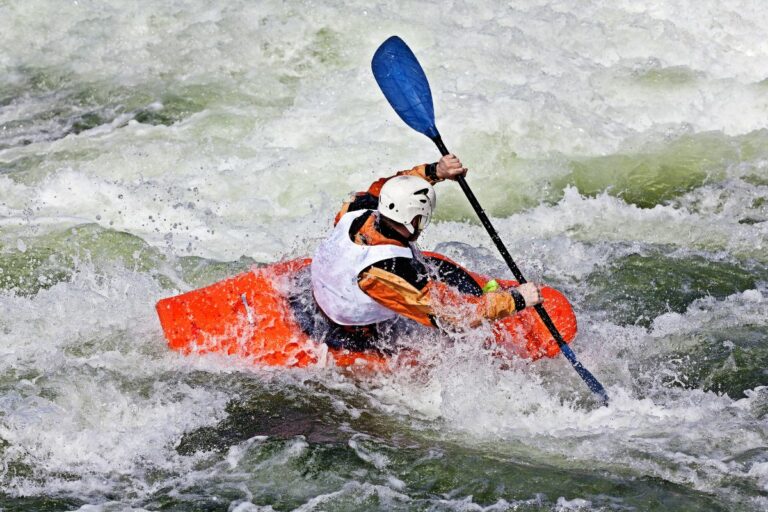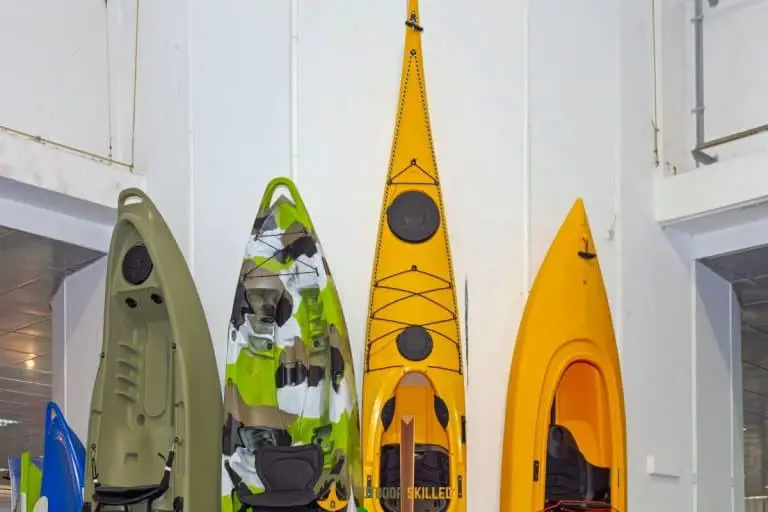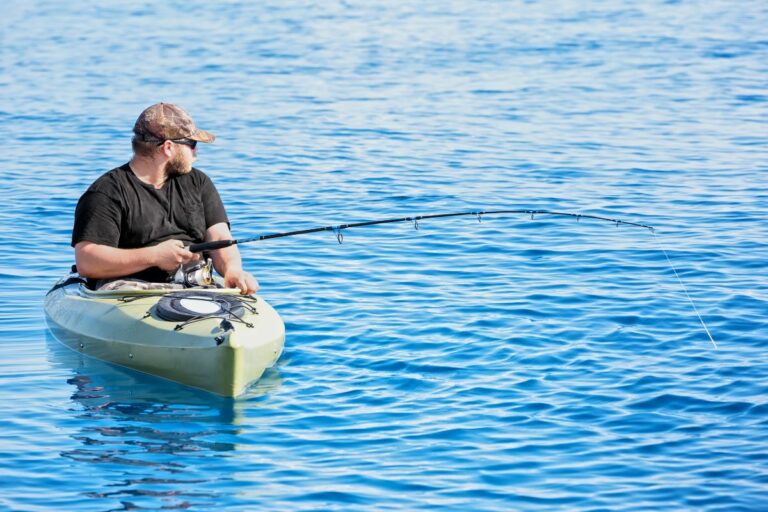Do Scupper Plugs Affect Stability? Easily Explained
Scupper plugs are small devices that can be inserted into the drainage holes of a kayak to prevent water from entering.
But do scupper plugs affect stability? While they are commonly used to keep your kayak dry, there is some debate about whether using scupper plugs can affect the kayak’s performance.
Scupper plugs do not significantly affect stability as long as they fit the kayak’s scupper holes and are correctly installed. In some cases, using scupper plugs can even improve the kayak’s stability by reducing the amount of water sloshing in the hull.
Keep reading to learn more about when to use scupper plugs and how to install them properly to enhance your kayak’s performance.
Table of Contents
What Are Scupper Plugs?
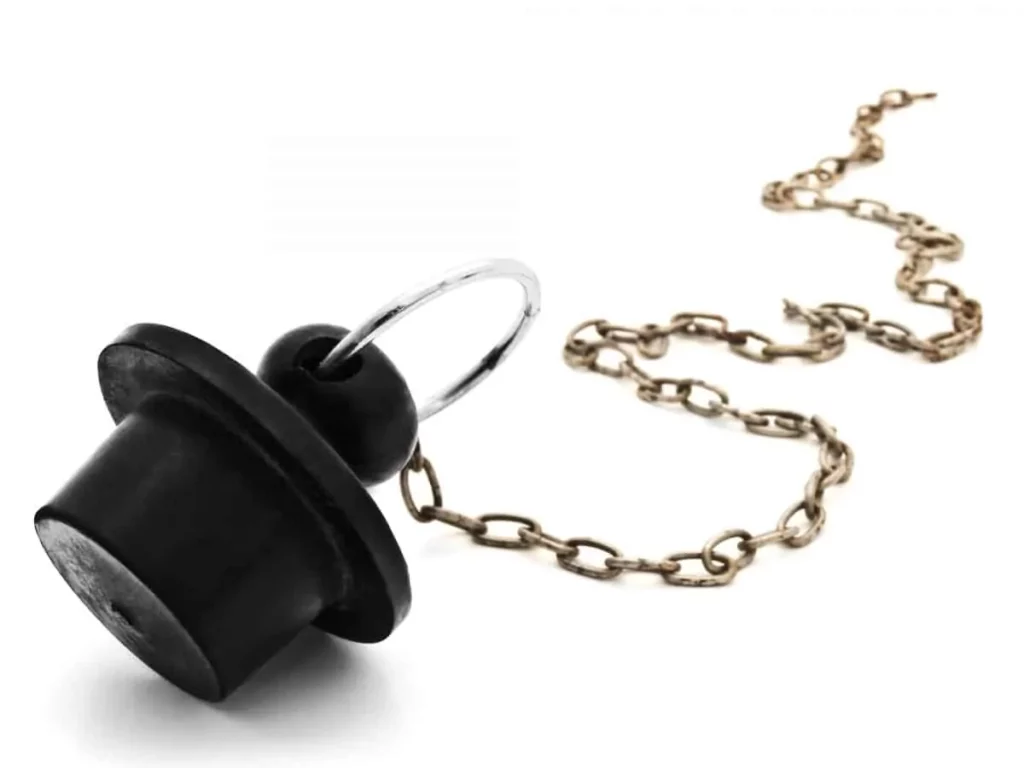
Some kayaks have scupper holes, which are small openings that allow water to drain out of the cockpit or storage areas, preventing the accumulation of water in the hull.
Scupper plugs are small devices designed to fit into these scupper holes to effectively seal them and prevent water from entering. They are typically made of plastic or rubber and come in a variety of shapes and sizes to fit different kayak models.
They can significantly improve your kayak’s comfort and performance, making them an essential accessory for many kayakers, particularly those who frequently paddle in choppy or rough water conditions.
Do You Have to Use Scupper Plugs?
You do not have to use scupper plugs. The decision to use scupper plugs will depend on your preferences and the specific water conditions in which you will be kayaking.
You may want to use scupper plugs when kayaking in choppy or rough water conditions, heavy rain, or cold water to prevent water from entering the kayak through the scupper holes.
However, you may want to remove scupper plugs in calm water conditions to allow for maximum drainage. Additionally, some kayakers may remove scupper plugs from specific scupper holes to customize their seating or storage arrangements.
Do Scupper Plugs Affect Stability?
As mentioned before, using scupper plugs to seal the scupper holes can affect the kayak’s performance, particularly the kayak’s speed.
Since scupper holes are designed to allow water to drain out of the kayak, plugging them will reduce the amount of water drained from the hull, causing the kayak to sit lower in the water, which increases drag and slows down the kayak.
However, when it comes to stability, scupper plugs do not have any significant effect. As long as they fit the kayak’s scupper holes and are correctly installed, they can enhance stability by reducing the amount of water sloshing around in the hull.
How to Choose the Right Scupper Plugs for a Kayak?
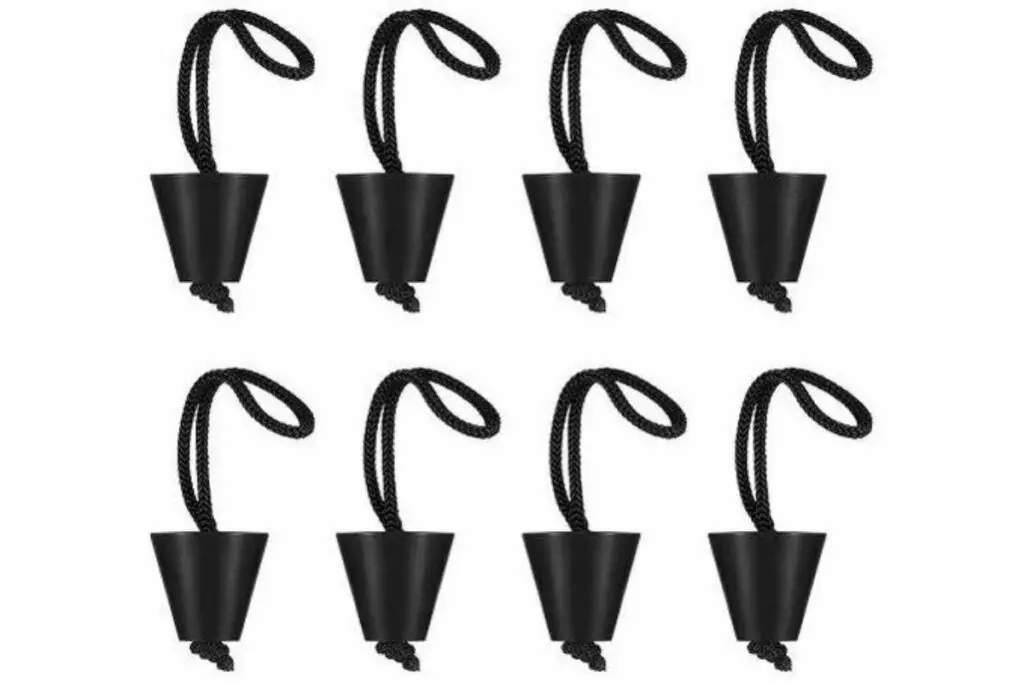
Choosing the right scupper plugs for a kayak can depend on several factors, including the kayak model, the size and shape of the scupper holes, and the water conditions in which you will be kayaking.
Here are some tips to help you choose the right scupper plugs for your kayak:
- Check the kayak manufacturer’s recommendations: Some kayak manufacturers provide specific recommendations for scupper plugs that are compatible with their kayaks.
- Measure the scupper hole size: Measure the diameter of the scupper holes on your kayak to ensure you choose snug plugs. It’s also important to choose scupper plugs that are the right length, as plugs that are too long or too short can cause leaks or be difficult to remove.
- Consider the water conditions: If you are kayaking in rough water or waves, you may want to choose scupper plugs that are more secure and less likely to pop out.
- Look for durable materials: Choose scupper plugs made from high-quality materials that can withstand exposure to water, sun, and other elements.
- Soft silicone or rubber plugs can be a good choice as they are flexible, easy to insert and remove, and can create a watertight seal.
- Test the plugs: Before heading out on the water, test the scupper plugs to ensure they fit securely and create a tight seal. This can help to prevent leaks and ensure a more comfortable and stable ride.
If you’re not sure which scupper plugs to get, let me make things simpler for you:
My top recommendation for reliable scupper plugs is these Hikeen Kayak Scupper Plugs that can fit most kayaks. They’re made from durable and lightweight EVA material and feature a sturdy lanyard attached to the top, which makes them easy to install and remove.

How to Properly Install Scupper Plugs?
If scupper plugs are not installed properly, it can lead to leaks and water pooling in the kayak, which can affect the kayak’s stability and overall performance.
So, here are the steps to properly install scupper plugs:
- Determine which scupper holes need plugs: Not all scupper holes need to be plugged. Some may be left open for drainage or customization of seating and storage arrangements.
- Choose the right size plugs: Make sure to choose scupper plugs that match the size and shape of the scupper holes on your kayak. It’s important to choose plugs that fit snugly to prevent leaks.
- Clean the Scupper Holes: Before inserting the scupper plugs, make sure the scupper holes are clean and free of debris.
- Insert the plugs: Insert the plugs into the scupper holes. Make sure they fit securely and create a watertight seal. You may need to twist or push the plugs in to ensure a proper fit.
- Test the plugs: Before heading out on the water, test the plugs to ensure they are secure and prevent water from entering the kayak. You can do this by pouring some water on the kayak’s deck and checking for leaks.
Pull the plugs out of the scupper holes when you’re finished kayaking and ready to remove them. Some plugs may be easier to remove if you twist them slightly before pulling them out.
Next, you need to properly store your scupper plugs in a dry, cool place away from direct sunlight to ensure they last a long time and remain in good condition.
Before storing your scupper plugs, make sure to clean them thoroughly to remove any dirt, debris, or saltwater residue, and then dry them to prevent moisture buildup and mold growth.
Kayak your way to Freedom
- On a budget? Check out the best fishing kayaks under $500 here and the best Fishing Kayaks under $1,000 here. Or Check the best Cheap Kayaks here.
- Going fishing? Here are the best Ocean fishing kayaks, and here are the best River Fishing Kayaks.
- You can also find the best Fly Fishing Kayaks here and the best Bass Fishing Boats here.
- A bit experienced? Check out the best modular kayaks here and the best tandem fishing kayaks here.
- Looking for something special? Check out my favorite Ducky kayaks here.
- Navigate your way with these awesome and beginner-friendly Kayak compasses.
- Going Hunting? These Duck hunting kayaks will give you an unfair advantage!
- Have a need for speed? These motorized kayaks will get you moving.
- Protect yourself from the sun with these Kayak shades, and make your kayak more comfortable with these Kayak seats.
- Keep your feet dry and warm with these superb Kayaking shoes.
- Going Kayaking in cold water? Stay warm with these Kayaking gloves.
- Paddle Less, Fish More with the Best Kayak Motors
- Looking to get a trolling motor on your kayak? Check out the best kayak trolling motor mounts here.
If you like this article, please share it or pin it, you can find the share buttons below. We will really appreciate it ❤️

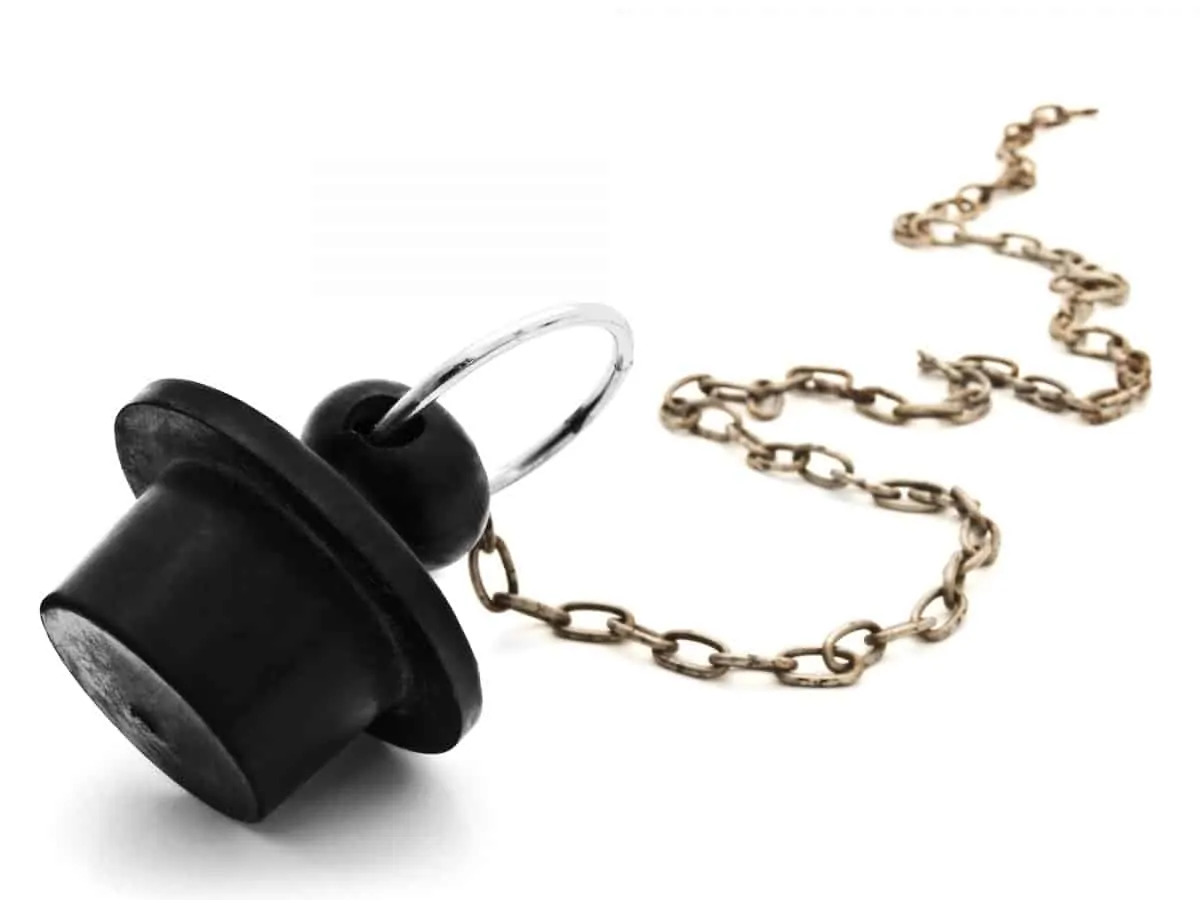
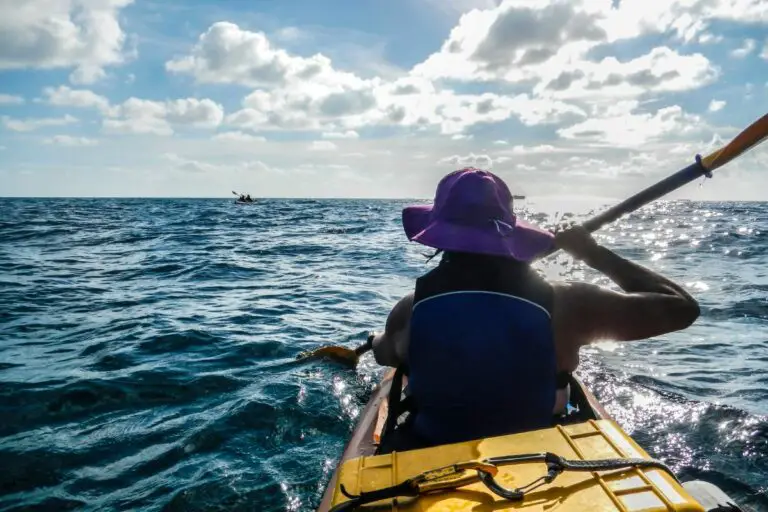
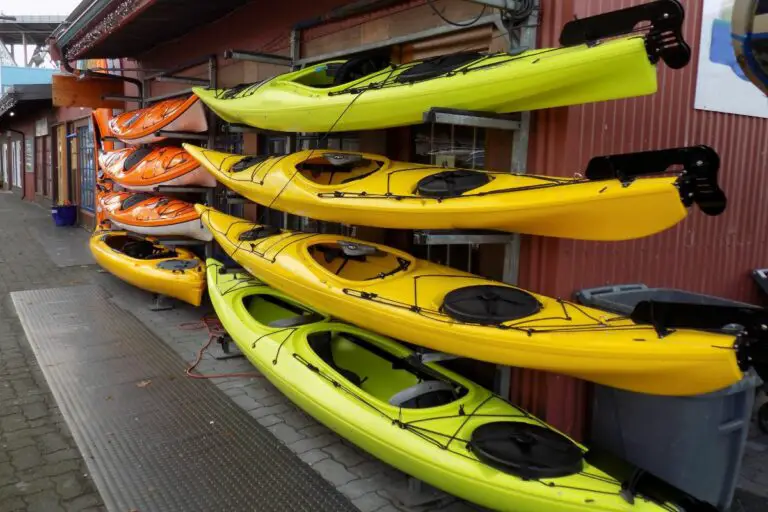
![Which Is Easier: Canoeing Or Kayaking? [Pros & Cons]](https://outdoorskilled.com/wp-content/uploads/2021/11/canoe-vs-kayak-768x512.jpg)
